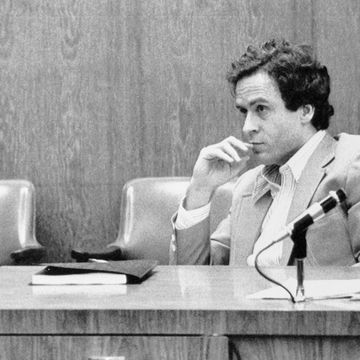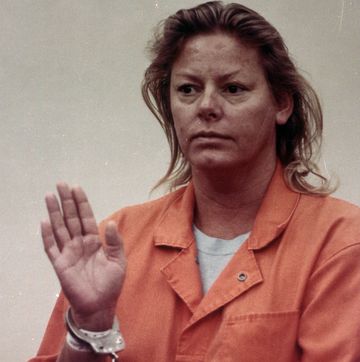Key Takeaways:
- In 1991, the bodies of four teenage girls were discovered after a fire at a Texas frozen yogurt shop. The case, known as the yogurt shop murders, remained unsolved after three decades.
- After advanced testing disproved a possible DNA match in 2017, investigators continued to search for the perpetrator using a firearms database.
- DNA obtained from a shell casing and one of the victims’ fingernails helped identify deceased criminal Robert Eugene Brashers as a suspect.
A harmless night inside a frozen yogurt shop in Austin, Texas, turned catastrophic when four teenage girls were murdered and their remains gruesomely burned in a fire. Since December 1991, investigators pursued answers for the heinous crime, but the truth behind the yogurt shop murders has remained hidden.
However, a new breakthrough may help solve the case more than three decades later. The Austin Police Department has announced that “a wide range of DNA testing” has helped identify Robert Eugene Brashers as the likely suspect in the teens’ murders.
“APD investigators have been in touch with the families,” a statement read, adding the investigation remains ongoing. “We ask for your patience as we continue this process and remain mindful of the many people whose lives have been deeply affected by this case.”
A docuseries, The Yogurt Shop Murders, debuted on HBO in August and renewed interest around the unsolved case. Directed and produced by Austin native Margaret Brown, the four-part project includes interviews with city officials and family members of the victims as it examines the pain that has lingered over the Texas capital for almost 34 years.
“I would be at parties, and people would just start talking about the Yogurt Shop Murders,” Brown told Time. “It’s part of the mythos of Austin, part of the collective memory, the fabric of the city.”
Advancements in DNA technology—including one that helped identify one of the most famous killers in U.S. history, the Boston Strangler—had brought detectives tantalizingly close to solving the case, but to no avail. Now, it appears they have their best lead to date and are on the verge of closing a tragic chapter in Texas history.
What were the yogurt shop murders?
On December 6, 1991, firefighters responded to a blaze at an I Can’t Believe It’s Yogurt store in Austin. But once the fire was under control, a more grisly discovery emerged.
Responders found the bodies of four teenage girls, including two workers, who were killed by gunshots to the head. According to the San Antonio Express-News, multiple victims were sexually assaulted. The remains were quickly identified as belonging to Eliza Thomas, 17; Jennifer Harbison, 17, and her younger sister Sarah Harbison, 15; and Amy Ayers, 13.
Investigators surmised the fire was started intentionally to cover up the killings and, while much of the evidence was compromised, discovered two initial clues. A bullet found was found in a store sink suggested a .22 caliber revolver was one of two guns used during the crime. Additionally, a couple who left the store around 11 p.m. testified to police that Jennifer Harbison had locked the door behind them to prevent additional customers from entering. They saw two men who “looked out of place” sitting at a table with only a single drink.
The Austin Police Force established a task force solely dedicated to solving the quadruple homicide, but finding the truth proved elusive.
Two men were convicted of the murders, but later freed
According to The Austin Chronicle, at least 50 individuals confessed to the yogurt shop murders over the next decade.
In October 1999, police arrested four men in connection to the crime: Robert Burns Springsteen Jr., Michael James Scott, Maurice Pierce, and Forrest Welborn. All four were charged with capital murder. The charges against Pierce and Welborn, who were juveniles when the crime took place, were eventually dropped because of lack of evidence, according to Today. However, in 2001 and 2002, respectively, Springsteen and Scott—who separately confessed the crimes to detectives—were tried and convicted. Springsteen received the death penalty (later commuted to life in prison), while Scott was givem a life prison sentence.
But by 2009, both Springsteen and Scott had their charges dismissed and were released. The Texas Court of Appeals ruled that Springsteen had received an unfair trial because he wasn’t allowed to cross-examine Scott, who had implicated him in his written confession. A court determined Scott’s rights under the Sixth Amendment were violated for the same reason.
According to People, detectives also admitted to unethical interrogation methods, including holding a gun to Scott’s head and withholding key evidence. Perhaps most importantly, genetic testing of DNA found on one of the bodies didn’t produce a match for either suspect.
Springsteen and Scott weren’t exonerated, meaning they could be tried again. However, no one has been arrested in the case since their release.
Still, a promising clue brought investigators and the victims’ families tantalizingly close to more answers.
Investigators pursued a DNA test used to identify the Boston Strangler
In 2017, Austin police matched a DNA sample from the crime scene with one the FBI had uploaded to a public research database overseen by the University of Central Florida. According to the Austin American-Statesman, the sample is a single DNA strand, or Y-STR, that includes a Y chromosome. Although they can’t identify an individual from this snippet, these sections could help pinpoint a suspect’s male lineage.
One of the most notable examples of this involves Albert DeSalvo, who confessed to being the notorious “Boston Strangler” responsible for killing 13 women during the 1960s. Although DeSalvo was never convicted of any of the murders prior to his 1973 death, a Y-STR found on one of the victims was tested decades later. It produced a match with his nephew, confirming DeSalvo was responsible for that murder, though his role in the other 12 is still disputed.
Although investigators in the yogurt shop case hoped to do similar research on the Y-STR in question, the FBI initially refused to grant access to the research sample for legal reasons based on the anonymity of the Florida study. “The FBI did not perform forensic DNA testing in [the Austin] case and cannot speak to this case,” the agency said in a statement.
The DNA strand didn’t produce a match, leaving the case open
According to the CBS program 48 Hours, the FBI ultimately agreed to work with the Austin Police Department for further testing at the urging of U.S. Congressman Michael McCaul, who represents part of the Texas capital. However, the results weren’t what investigators had hoped.
More accurate analysis performed on the crime scene sample in 2020 raised the number of identifiable DNA markers from 16 to 25. However, this more complete picture ultimately led the FBI to “conclusively exclude the male donor of the FBI’s sample” as a match, meaning the case was at another dead end.
“That was the greatest disappointment because we really thought we had it,” McCaul said.
But lead detective Dan Jackson, who took over the case in 2022, didn't give up and helped find a pair of breakthrough links.
Additional testing produced a match to Robert Eugene Brashers
The Austin Police Department has identified Robert Eugene Brashers as the likely perpetrator in the yogurt shop case and detailed its new findings in a news conference on September 29, 2025.
According to the Missouri State Highway Patrol, Brashers died at age 40 in January 1999 after shooting himself during a standoff with police. He has an extensive criminal history, including a 1986 conviction of attempted second degree murder. According to The Washington Post, authorities have linked Brashers to other notable cases, including the 1998 killings of Sherri Scherer, 38, and Megan Scherer, 12, inside their home in Portageville, Missouri.
Chief of Police Lisa Davis said Brashers was matched to the only physical evidence at the Austin crime scene, identified as a spent .380 shell casing located in a floor drain.
Detective Jackson resubmitted the casing to the National Integrated Ballistic Information Network, a database created to link firearms to crime scenes. This matched the alleged weapon used in the yogurt shop murders with one from another unsolved murder case in Kentucky.
Then, in August 2025, the South Carolina State Lab reported a complete Y-STR match to a profile in its database. The results were reviewed for accuracy and shared with the APD—pointing to Brashers. DNA obtained from Amy Ayers’ fingernail clippings was re-examined for confirmation and produced a 2.5 million to 1 likelihood the genetic material belonged to Brashers.
Austin Mayor Kirk Watson said “this day has been a long time coming” for the city. “We can finally express a deep sigh, a release, that comes from knowing,” he added.
Watch The Yogurt Shop Murders on HBO Max
During his remarks, Jackson emphasized the new findings were only possible through advancements in science and investigative technology.
“This is something that could not have happened until 2025,” Jackson said. “And I’m sorry that it took 34 years for us to get here, but we’re here now and, you know, Amy’s final moments on this earth were to solve this case for us. It’s because of her fighting back.”
For more background about the case, watch all episodes of The Yogurt Shop Murders on HBO Max.
Tyler Piccotti joined the Biography.com staff as an Associate News Editor and is now the News and Culture Editor. He previously worked as a reporter and copy editor for a daily newspaper recognized by the Associated Press Sports Editors. In his current role, he shares the true stories behind your favorite movies and TV shows and profiles rising musicians, actors, and athletes. When he's not working, you can find him at the nearest amusement park or movie theater and cheering on his favorite teams.
















